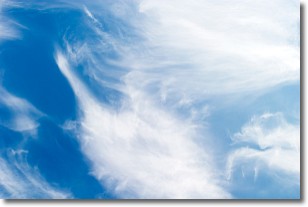Weather Alert in Illinois
Flood Watch issued August 12 at 11:33AM CDT until August 13 at 12:00AM CDT by NWS Chicago IL
AREAS AFFECTED: DuPage; Northern Cook; Central Cook; Southern Cook; Northern Will; Southern Will; Eastern Will; Lake
DESCRIPTION: * WHAT...Flash flooding caused by excessive rainfall is possible. * WHERE...Portions of northeast Illinois, including the following areas, Central Cook, DuPage, Eastern Will, Northern Cook, Northern Will, Southern Cook and Southern Will and northwest Indiana, including the following area, Lake IN. * WHEN...Through this evening. * IMPACTS...Creeks and streams may rise out of their banks. Flooding may occur in poor drainage and urban areas. Underpasses may be flooded. Roads and streets may be flooded. * ADDITIONAL DETAILS... - Showers and thunderstorms are possible this afternoon and evening. Atmospheric conditions are favorable for rainfall rates up to 1-2 inches per hour. In addition to increased runoff potential due to urban land cover in the Chicago Metropolitan Area, near surface soil moisture in some areas is elevated due to recent rainfall. - http://www.weather.gov/safety/flood
INSTRUCTION: A Flood Watch for flash flooding means rapid-onset flooding is possible, but not yet certain, based upon the latest forecasts. Flash flooding is a dangerous situation. Persons with interests along area rivers, creeks, and other waterways should monitor the latest forecasts and be prepared to take action should flooding develop.
Want more detail? Get the Complete 7 Day and Night Detailed Forecast!
Current U.S. National Radar--Current
The Current National Weather Radar is shown below with a UTC Time (subtract 5 hours from UTC to get Eastern Time).

National Weather Forecast--Current
The Current National Weather Forecast and National Weather Map are shown below.

National Weather Forecast for Tomorrow
Tomorrow National Weather Forecast and Tomorrow National Weather Map are show below.

North America Water Vapor (Moisture)
This map shows recent moisture content over North America. Bright and colored areas show high moisture (ie, clouds); brown indicates very little moisture present; black indicates no moisture.

Weather Topic: What are Wall Clouds?
Home - Education - Cloud Types - Wall Clouds
 Next Topic: Altocumulus Clouds
Next Topic: Altocumulus Clouds
A wall cloud forms underneath the base of a cumulonimbus cloud,
and can be a hotbed for deadly tornadoes.
Wall clouds are formed by air flowing into the cumulonimbus clouds, which can
result in the wall cloud descending from the base of the cumulonimbus cloud, or
rising fractus clouds which join to the base of the storm cloud as the wall cloud
takes shape.
Wall clouds can be very large, and in the Northern Hemisphere they generally
form at the southern edge of cumulonimbus clouds.
Next Topic: Altocumulus Clouds
Weather Topic: What are Altostratus Clouds?
Home - Education - Cloud Types - Altostratus Clouds
 Next Topic: Cirrocumulus Clouds
Next Topic: Cirrocumulus Clouds
Altostratus clouds form at mid to high-level altitudes
(between 2 and 7 km) and are created by a warm, stable air mass which causes
water vapor
to condense as it rise through the atmosphere. Usually altostratus clouds are
featureless sheets characterized by a uniform color.
In some cases, wind punching through the cloud formation may give it a waved
appearance, called altostratus undulatus. Altostratus clouds
are commonly seen with other cloud formations accompanying them.
Next Topic: Cirrocumulus Clouds
Current conditions powered by WeatherAPI.com




